The legend who single-handedly made a $7.63M dollar watch
1 Case Study
When you think of expensive, exclusive watches, you think of big-name brands; Patek Phillipe, Rolex, or TAG Heuer perhaps.
But what if I told you the most sought-after watches are made by homeboy right here…
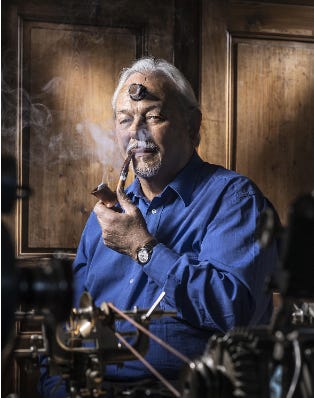

This gentleman is Philippe Dufour and he’s a “living master of Haute Horlogerie who brings grace to a craft that in his hands, becomes art.”
He honed his craft in the Swiss watch industry before going out on his own as one of the first independents in the industry.
His first creation was the “Grande et Petite” which he shipped in 1992.
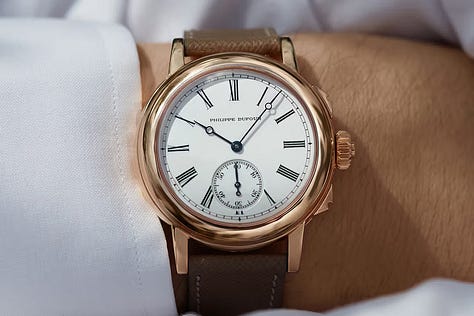
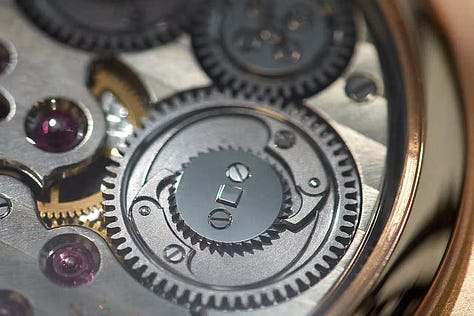
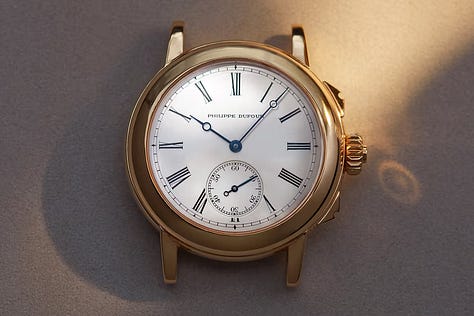
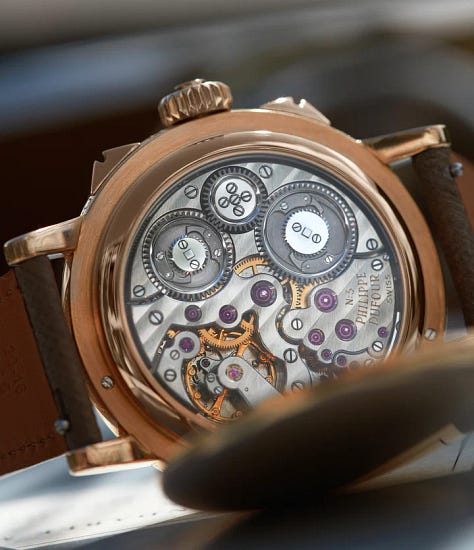
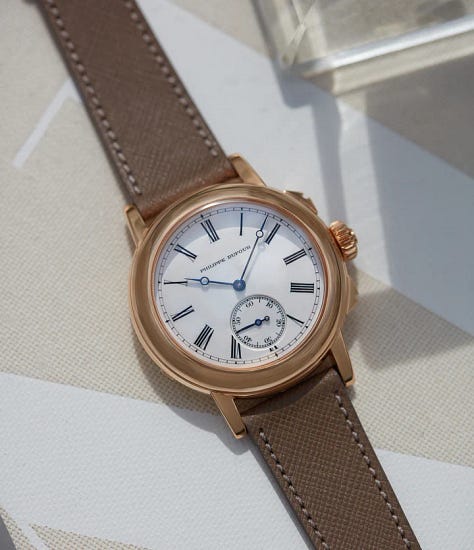
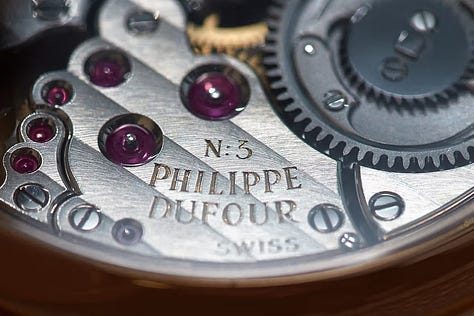
It also chimes the hours and quarters automatically. The reason why it sounds so epic? You’re not gonna believe me… tiny gongs and hammers.
But get this… he only made 8 of ‘em.
A London-based dealer listed the Philippe Dufour Grande et Petite Sonnerie Number 3, which was originally made for the Sultan of Brunei.
At $7.63M, it would become the most expensive independent watch ever sold.
Shortly after (Aug 16th, 2021)… it was sold.
Other watches he made are:
Simplicity: This is perhaps Dufour's most famous watch, and is considered to be one of the greatest modern watchmaking achievements. It features a simple time-only display, but is made with exceptional attention to detail and finishing.
Duality: This is a unique watch that features two independent escapements, allowing it to keep exceptionally accurate time.
4/4: This is a watch that features a unique movement design, with four separate gear trains that all run in parallel.
Chronometer Souverain: This is a classic time-only watch that is made with exceptional attention to detail and finishing, and is considered to be one of the finest examples of traditional Swiss watchmaking.
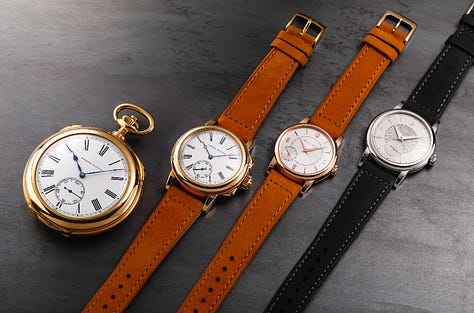
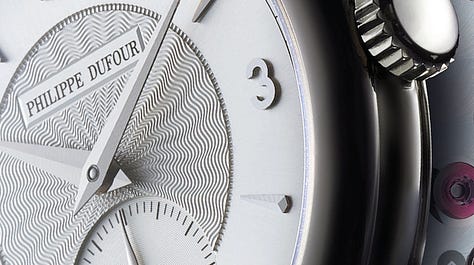
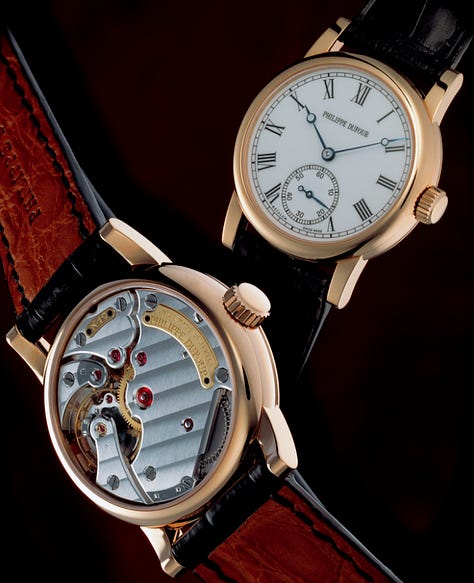
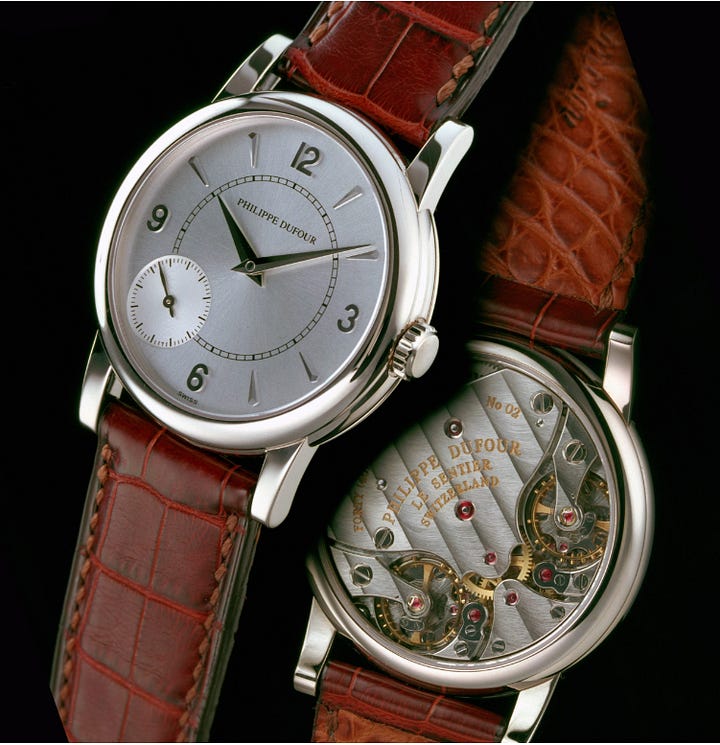
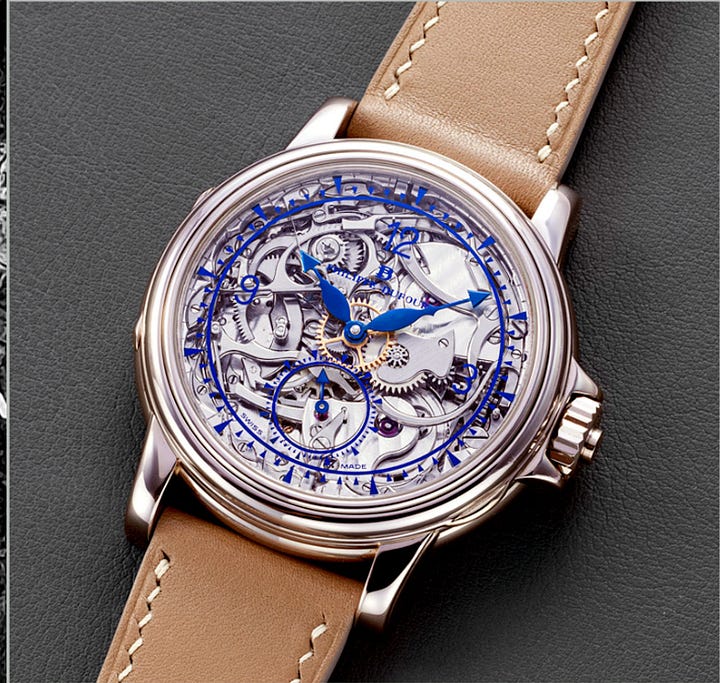
Why are they so expensive?
If you didn’t guess by now, he makes every single piece of the watches himself. Hundreds of components, painstakingly handcrafted by this one man (and his daughter Daniela Dufour who’s also a master watchmaker).


He also uses techniques that no one uses anymore.
It gets even crazier though… you literally can’t buy a watch from him.
Every watch that has been made is spoken for.
BUT… that’s also true for every watch that WILL BE MADE!
Philippe Dufour officially closed his waitlist 11 years ago (in 2012) after receiving an overwhelming number of requests.
So the only way to get one is to buy it from someone who already has one.
I don’t think one essay does this man justice so I’ll probably write a few more.
But if you wanna learn more about him, his website is an absolute blast. He shares how he got into the field and the obstacles he faced.
Here’s an excerpt:
The idea was to market it.
But at the time, I couldn't afford to invest in a gold box, so I finally inserted the movement in a brass circle and went prospecting in Geneva, Zurich, Lucerne, in specialized stores, at collectors.
Everywhere I went, people tapped me on the shoulder and told me that it was good and that I should continue, but nobody trusted me.
Very often, I was advised to propose my work to a brand. So finally, I proposed this watch to Audemars-Piguet, and they showed an interest in my work: 5 watches were ordered by this brand.
So, you may think that 5 watches are not much! But in terms of work, it represents a lot since it took me about 2000 hours of hard work to make one, so it was a lot of work. That's how I started making watches for others.
The watches, I would deliver them completely finished. I had to find a case maker who produced beautiful pocket watch cases and an enamel dial maker.
And from then on, I had a lot of disappointments.
My work had not been respected.
Out of 5 watches, 2 were broken. My watches were treated like potatoes. The first watch, a Grande Sonnerie (a pocket watch), which had been exhibited in Basel, came back a few months later from an exhibition in Paris, in a plastic bag with some other watches.
They clashed during the whole trip. The result? Completely scratched case, broken glasses, broken hands, broken enamel dial. I redid the job a second time and charged everything. Unfortunately, it was not the same. But what happened to the second one is even worse.
There are so many takeaways here:
You can solve a problem that costs someone money for a % of it (B2B) or you can make a 10X better product than people are already buying (B2C).
The best way to increase your revenue is to get a higher quality of customers.
Don’t let the market push your prices down. Idiots compete on price. You not being able to afford something is not the same as it being overpriced.
If you become the go-to-guy in your craft, price becomes a mere triviality.
We’re craftsmen. Take pride in what you do and do it to the best of your ability.
Talk to you tomorrow for the second to last piece of this week.
RJY
Chop wood. Carry water.

